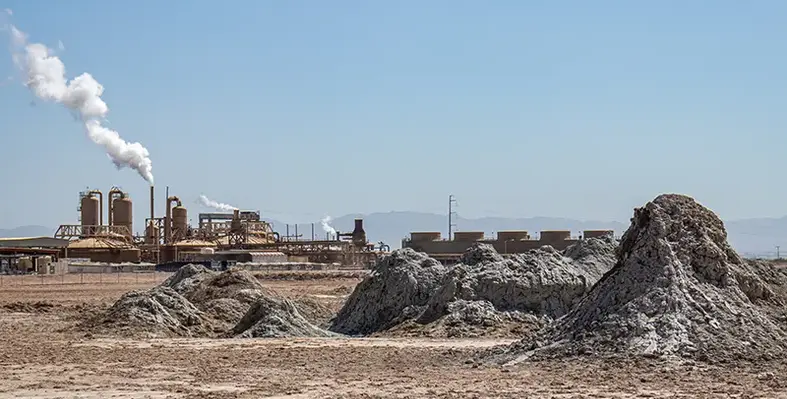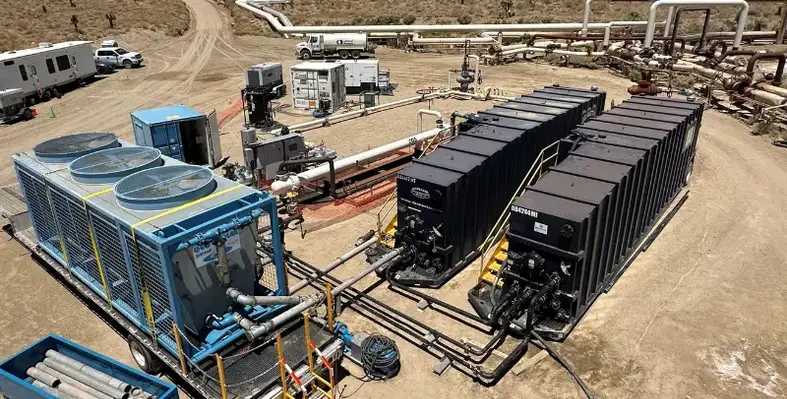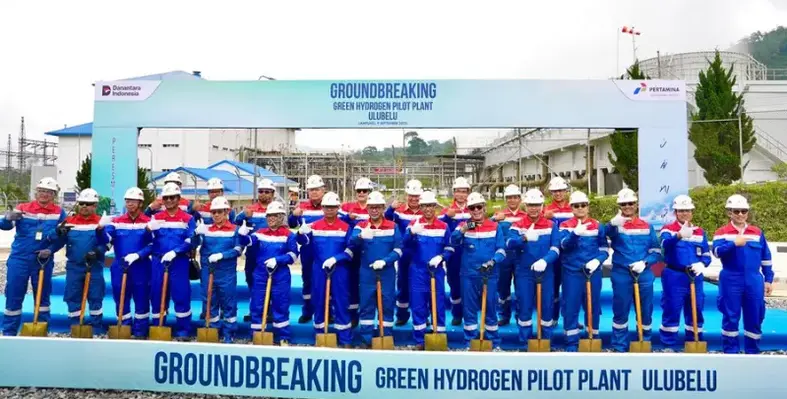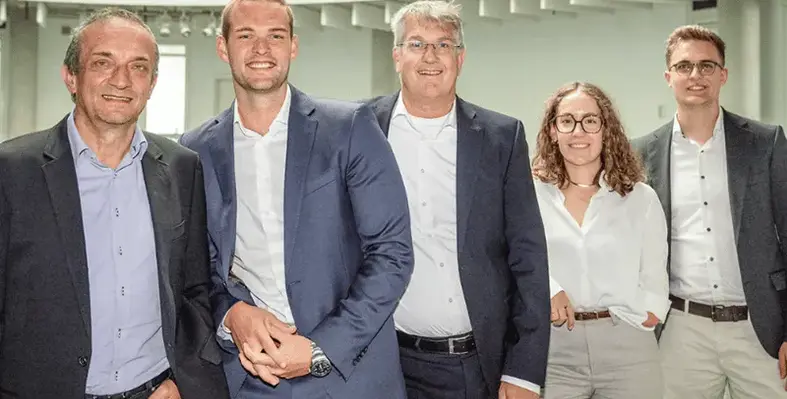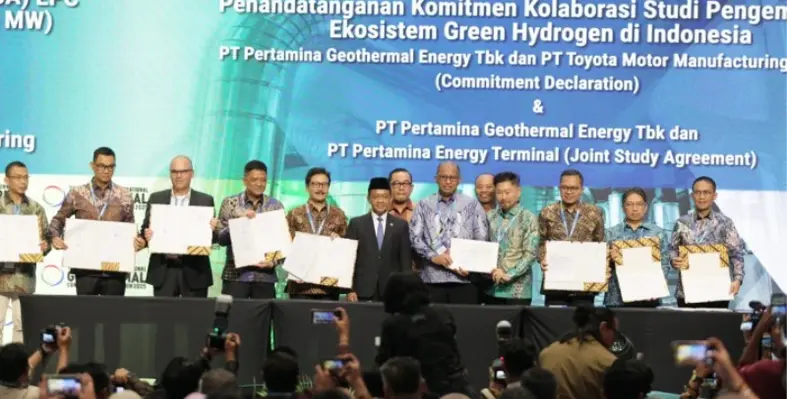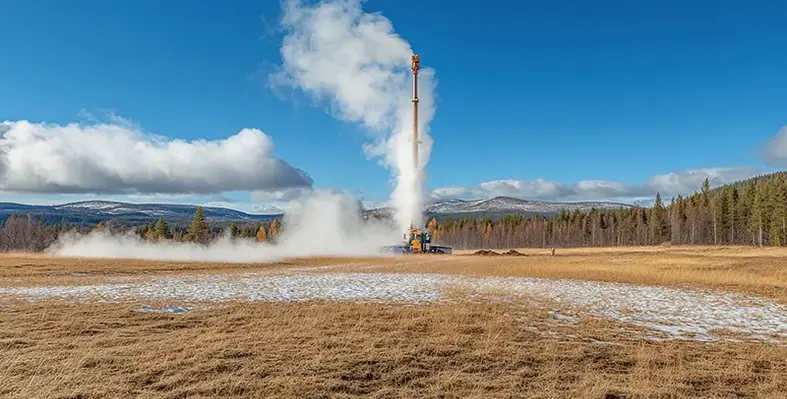Latest News
Latest News
- Region: Europe
- Topics: Geothermal
- Date: 2 October, 2025
OSSO has secured a major geothermal contract to provide its high-capacity mud cooling technology to support a six well, three rig drilling campaign in Germany’s Upper Rhine region.
- Region: North America
- Topics: Geothermal
- Date: 1 October, 2025
North America is helping to drive momentum in the global geothermal sector, with the region seeing increased activity relative to other parts of the globe in recent times.
While the number of next-generation geothermal project announcements plateaued elsewhere, North America continued to increase its global share – acting as a key driver of pipeline expansion, according to a recent Wood Mackenzie report.
A total of 260 MW of new Advanced Geothermal Systems (AGS) power capacity was announced in the the USA during Q2 2025, raising un-risked AGS capacity to 20% of the overall US project pipeline — up from just 2% in the same period last year, the report noted.
Next-generation geothermal technologies, especially, are creating a new buzz of excitement around the sector, it noted.
Moreover, the growth of the data centre industry, and collaborations with geothermal energy partners, continue to boost and strengthen the next-gen project pipeline.
AGS comprises a closed-loop system that circulates fluid through the subsurface while avoiding direct contact with rock or groundwater. Unlike conventional geothermal, it can be used almost anywhere.
Other next-gen technologies include enhanced geothermal systems (EGS), whereby fluid is injected into hot rocks to increase permeability; Geopressured Geothermal Systems (GGS), which extract energy from high-pressure, high-temperature reservoirs of water containing dissolved methane; and superhot rock, which involves harnessing geothermal energy from extremely hot, dry rocks found deep underground.
According to Wood Mackenzie, US policy momentum and funding is also accelerating.
“The US government’s backing for direct lithium extraction (DLE) project ATLiS, with its co-located geothermal project, accounted for most public funding of geothermal in North America in Q1 – and a significant proportion of global funding,” the energy consultancy noted in an opinion piece.
Taking AtLiS out of the equation, total public funding for geothermal globally increased by 57% between Q1 and Q2 2025, to hit US$400mn – helped by strategic reforms, incentives and international alliances, it added.
The focus was on core geothermal projects covering conventional and next-generation technologies.
Investor confidence also remains strong, Wood Mackenzie added, with next-generation startups including Fervo, XGS, Eavor and Green Therma raising a total of US$319mn during Q2.
That sum represents 14% of all money invested in next-gen geothermal since 2019, and brings the total amount secured between 2019 and 2025 to a healthy US$2.2bn.
- Region: North America
- Topics: Geothermal
- Date: 1 October, 2025
XGS Energy has announced the successful operation of its proprietary water-independent technology system at commercial scale for more than 3,000 hours, becoming the first company to achieve this milestone.
- Region: Europe
- Topics: Geothermal
- Date: 29 September, 2025
Cornish Lithium has secured further investment from the National Wealth Fund (NWF) to enable the company to develop a secure supply of lithium to the UK.
- Region: Europe
- Topics: Geothermal
- Date: 26 September, 2025
Vulcan Energy has signed a major contract with Turboden and ROM Technik for the development, procurement and construction of the commercial geothermal power plant near Landau, Germany.
- Region: Europe
- Topics: Geothermal
- Date: 25 September, 2025
A merger between two of the energy industry’s largest drillers could create a new heavyweight player within the geothermal sector, bringing with it fresh ideas, new technology and huge financial clout.
Italy’s Saipem and Norway’s Subsea7, best-known for their work across the global oil and gas industry, first announced their intention to merge earlier this year.
The new entity — to be renamed Saipem7, with combined revenues of some €21bn, and to be headquartered in Milan — will also have a strong interest in the emerging technologies being utilised across the geothermal field.
While the completion of the merger is not anticipated until well into 2026, the concentration of resources and huge expertise in drilling could yield significant gains for the advancement of the geothermal industry.
Announcing the rationale behind the merger, the two companies said that the new combined entity would offer a full spectrum of offshore and onshore services for clients working in renewable energy, as well as oil and gas, and carbon capture.
It also builds on existing work, particular by Saipem, which last year announced its intention to accelerate research and development in the geothermal energy world.
That included, for example, a collaboration with Geolog and Ignis H2 Energy to develop advanced technological solutions and conduct feasibilities studies for new geothermal plants in order to obtain clean and renewable energy, both in Italy and worldwide.
At the time, Saipem said the pact formed a part of its wider research and development efforts dedicated to offering geothermal technological solutions and for other energy transition applications.
Saipem also added that its three main areas of interest in the sector relate to next-generation geothermal energy systems, offshore geothermal energy and the conversion of oil and gas wells.
- Region: Asia Pacific
- Topics: Geothermal
- Date: 24 September, 2025
PT Pertamina Geothermal Energy Tbk (PGE) has affirmed its strategic move beyond electricity by launching the Ulubelu Green Hydrogen Pilot Project, forming a critical part of the company’s efforts to build and end-to-end green hydrogen ecosystem in Indonesia.
- Region: Asia Pacific
- Topics: Geothermal
The Government of India has officially released the National Policy on Geothermal Energy (2025), reinforcing its dedication to achieving the ambitious 2070 Net Zero Goal while enhancing the country’s energy security through a diversified mix of renewable sources.
- Region: Europe
- Topics: Geothermal
- Date: 22 September, 2025
Arverne Group has completed Series B2 financing for its subsidiary, Lithium de France.
- Region: Europe
- Topics: Geothermal
- Date: 19 September, 2025
Factor2 Energy, a young Duisburg-based company with a bold vision for clean power, has successfully closed its Seed funding round, raising €7.7 million in venture capital.
- Region: Asia Pacific
- Topics: Geothermal
- Date: 18 September, 2025
PT Sarana Multi Inftastruktur (PT SMI) has signed an agreement with Ormat Geothermal Indonesia to explore the potential financing options for geothermal exploration in Wapsalit, Maluku, and Toka Tindung, North Sulawesi.
- Region: North America
- Topics: Geothermal
- Date: 17 September, 2025
Rodatherm Energy Corporation, a geothermal start-up, has successfully raised US$38mn in a Series A funding round.


